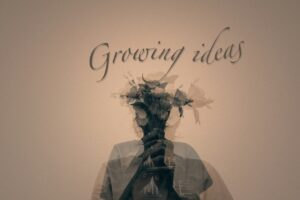
‘Listening leads to better performance — in the person who listens, in the person who is listened to and, as a consequence, in the whole organisation’, concludes listening researcher Guy Itzchakov [1]. Plus I would add: it also leads to better change processes and campaigns. So, why has listening training not long since become part of every organisational development project and campaign? Probably because people don’t think they have time for it.
Yet everyone knows that a lack of listening often leads to costly corrections or conflicts. To save time, people refrain from asking questions and engaging in dialogue, they jump in activistically and are surprised when not everyone is on board.
“A shortcut becomes a distraction and the ‘time saved’ is soon lost”.
And this happens despite the fact that, in principle, everyone knows the feeling of immediately feeling better as soon as they are listened to: You feel understood. Listening strengthens the relationship.
How does good listening work?
Good listening is an understanding that goes deeper than just cognitively grasping what is being said. It is also about feeling it, listening between the lines. Or to paraphrase The Little Prince: listening with the heart. Experiencing or feeling the interests, fears, needs and concerns behind what is being said is a good starting point for resonance or interpersonal dialogue.
 One researcher and practitioner of good listening is the Anglo-American psychologist Nancy Kline, author of the definitive book ‘Time to Think‘. For her, good listening is first and foremost about paying attention. This improves the quality of thinking in people who are well listened to.
One researcher and practitioner of good listening is the Anglo-American psychologist Nancy Kline, author of the definitive book ‘Time to Think‘. For her, good listening is first and foremost about paying attention. This improves the quality of thinking in people who are well listened to.
She tells an anecdote about how she inspired an Italian to think for himself, by suggesting he speak fluently in his native language (that she didn’t understand) whilst she gave him her undivided attention. He listened to himself, thanks to her full presence, and thus found the solution to his acute problem.
It is therefore also a question of stimulating reflection in those who are listened to, while they articulate and listen to themselves. It is understandable to want to help with advice to make things go faster — but the best way to help is to listen empathically:
Developing those unheard thoughts and ideas
“Real help (…) is listening to people, giving them respectful attention so that they can access their own ideas first”. But “for fear of being punished for their own thinking, most people suppress their ideas that could be important and make a difference if they were to be fully developed”, writes Nancy Kline [2].
 On the other hand, we all know what bad listening is: interrupting, impatient undertones, objecting and knowing better, looking at the watch, getting distracted, changing the subject or even hijacking cues to tell your own story. Or when advice and suggestions are given prematurely [3].
On the other hand, we all know what bad listening is: interrupting, impatient undertones, objecting and knowing better, looking at the watch, getting distracted, changing the subject or even hijacking cues to tell your own story. Or when advice and suggestions are given prematurely [3].
Carl Rogers, one of the founders of humanistic psychology, based in part on his method of active listening, believed that if advice was effective, there would be no need for psychologists. When a person is actively listened to, she or he realises “that someone is listening to my feelings with acceptance” and this enables him “step by step to listen to himself”, as Rogers writes in his master work “Theory of Personality Development” [4].
Being fully present to listen, support, and improve performance
Like Nancy Kline, Carl Rogers was given the gift of being able to be fully present and in contact with the other person. They practised listening not only as a technique but also as an encounter, playing the role of the unknowing curious person. If we try to adopt this attitude, even we non-Rogers and non-Klines can come into better contact with our counterparts.
Building on Rogers’ work, the above mentioned social psychologist Guy Itzchakov has found evidence for Rogers’ theories in his research [1]. According to him, the good feeling we get when someone really listens to us leads to a sense of security that allows us to stop defending or justifying ourselves: We confide in the other person. This allows us to listen to what they are saying and to sharpen or clarify our thinking.
Listening is even better than constructive criticism or praise.
Itzchakov writes that his research shows that for 40% of employees, criticism or praise does not lead to better performance, but to worse performance.
‘Theory U’ is based on listening
Listening is more than just hearing. The latter is a passive processes: a sound reaches your ear and you hear it, or someone speaks and you hear it as you go about your business. Listening, on the other hand, is active, attentive and mindful. For Otto Scharmer, the developer of ‘Theory U’, the ability to listen is also the key skill for social transformation. He distinguishes four levels of listening (see also his YouTube video and [5]):
- Downloading: Listening serves to confirm pre-existing judgements — one only hears what corresponds to one’s own expectations.
- Objectifying listening (‘seeing’): Scharmer calls this journalistic or scientific listening: Cognitively wanting to understand what is being said — and especially what differs from one’s own ideas: attention is focused on what is new and requires impartiality.
- Empathic listening (‘sensing’): Opening of the feelings, when perception shifts to the other person and their perspective. Empathy characterises listening. Also hearing the unspoken, e.g. in coaching.
- Creative listening (‘presencing’): The opening of the will, as Scharmer says: Here a special closeness arises between the dialogue partners, a flow that leads to co-creative ideas — and even to joint action. Itzchakov calls this ‘togetherness’; when something emerges that is greater than the two individuals.
The first type of listening should be avoided except in small talk. Adding empathic listening to objectifying listening expands the exchange and resonance. This is done, for example, by asking about feelings, à la “How does this make you feel?” Openly and curiously, without a critical undertone. With regard to mentoring, it can be said that the emotional level is important, but it must be handled with care. So ask whether it is okay for the mentee to enquire about what feelings are involved. [6] In coaching it is different, because it is about the person and the personality in everyday working life and therefore also about getting to the bottom of emotional states.
Creating change through listening
According to Theory U, transformation can only be initiated at levels 3 and 4. Be it organisational development, a development project or a climate campaign. Objective listening is not enough because you don’t empathise — but as we all know, emotions are the drivers of action and non-action. If you really want to change, you can only do it with empathy and participation (or with lots of money and power). And participation happens when people have a say in what happens and their fears are heard. Then there is ownership. This happens when people can develop their own ideas without fear.
 And that takes time: “It takes a lot of effort to listen. And it takes a lot of effort to understand” (Willy Brandt, a German statesman and Nobel Peace Prize laureate). And above all, to also feel what the other person means. But people often don’t do what is arduous.
And that takes time: “It takes a lot of effort to listen. And it takes a lot of effort to understand” (Willy Brandt, a German statesman and Nobel Peace Prize laureate). And above all, to also feel what the other person means. But people often don’t do what is arduous.
Changing the world — whether on a small, medium or large scale — is urgent. It requires activism — but activism based on listening. Or in the words of media expert Bernhard Pörsken: ‘Every scandal begins with a lack of listening in the system’. And he asks: ‘How can we overcome this ‘listening block’ and find a new openness? How can we reach those we can no longer reach? To be open, especially to listen to the quiet sounds, to recognise people’ — that is his central message. [7]
But yes, in a world full of noise, it is sometimes difficult to listen. Of course, it is even more necessary.
A time to think, in the thinking environment
In her book Time to Think (Cassell Illustrated, 1999), subtitled ‘Listening to ignite the human mind’, Nancy Kline emphasises the importance of listening for thinking. In her model of human interaction, she summarises ten behaviours that improve the way people think and therefore the way they work and live.
Bringing these behaviours into play creates the necessary thinking environment: Attention, Appreciation, Lightness, Encouragement, Diversity, Information, Feelings, Equality, Place and what she calls ‘Incisive questions’. For everyday use, she developed the “Thinking Partnership,” a 20-minute bilateral, structured “Time to Think” session. In this process, one person (the Thinker) speaks freely on a topic while the other (the Partner) listens attentively without interrupting. The Partner focuses on the Thinker’s content, their response, and creating a Thinking Environment. The session starts with a simple question like “What would you like to think about?” and continues with uninterrupted talking by the Thinker, with occasional prompts to deepen thinking.
This method fosters deeper, clearer thinking by providing a safe space for expression and exploration, leading to new insights and clarity. The Partner may ask those “Incisive Questions” to help the Thinker uncover limiting assumptions and find solutions. The 20-minute or longer bilateral “Time to Think” session allows for meaningful reflection and deep thinking without interruption.
Literature
[1] ‘Listening to understand: The role of high-quality listening on speakers’ attitude depolarisation during disagreements’, Guy Itzchakov et al, Journal of Personality and Social Psychology, 2023 (quoted in Psychologie Heute, 03/24).
[2] Time to Think, Nancy Kline, 1999 – Chapter 3, from which the quotes are taken.
[3] Other enemies of good listening are fears: The fear of having to correct one’s own views because of what one has heard, or of losing status if one does not speak up, or the fear of closeness (because listening creates closeness, which is not desired in all situations [Psychologie Heute, 24.03.]).
[4] Theory of Personality Development: Psychotherapy from a Therapist’s Perspective, Carl Rogers (1961).
[5] Essentials of Theory U: Basic principles and applications, Otto Scharmer, 2018.
- Here is a little exercise to learn how to listen (to alleviate the problem that many engaged people are in a constant doing mode that hinders listening).
- An illustrative, somewhat bizarre example of the importance of being able to listen: The CIA has long recognised how important listening skills are to being an agent. However, it is not the case that it trains its agents to listen, but rather that it recruits good listeners and trains them to become agents.
[6] This method is also known as deep listening and is based on three elements: Embodiment, presence and compassionate connection – and can be learnt as a certificate course. From: Rosamund Oliver, Deep Listening as training in Natur&Heilen, issue 2/2024.
[7] Bernhard Pörksen: ‘Listening. The art of opening up to the world’. Hanser, 2025.
Based on an original German article published by B’VM.



